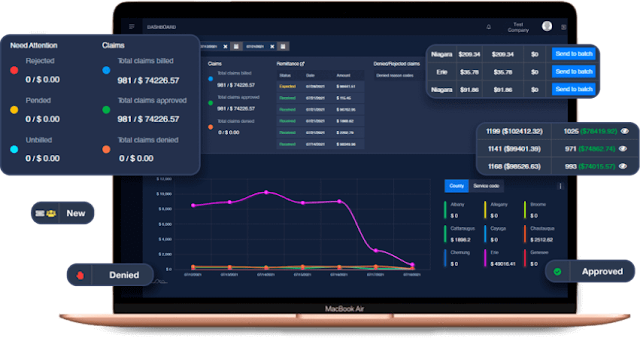Ad Code
Translate
List of 6,000+ Dofollow Commentluv Blogs FREE (Updated 2025)
January 16, 2025
What is Ozempic (semaglutide)? (Updated in 2025)
January 30, 2025
How To Find Suitable Properties In Cyprus? (Updated in 2025)
January 11, 2025
Smart strategies for trading on crypto exchanges
February 18, 2025
Unlocking the Power of Non-Emergency Medical Transportation (NEMT) Software
Zizo Gala-Mkhize
April 19, 2023
Non-Emergency Medical Transportation (NEMT) is a critical component of modern healthcare, providing transportation services to patients who require medical assistance but do not require emergency care. NEMT software has emerged as a game-changer in this field, streamlining and optimizing the entire process of coordinating and managing NEMT services. In this article, we will explore the concept of NEMT software, highlight its importance, discuss critical considerations for choosing the right NEMT software, and conclude with a summary of its benefits.
What is Non-Emergency Medical Transportation Software?
NEMT software is a specialized technology solution designed to address the unique challenges of managing and coordinating non-emergency medical transportation services. It encompasses many features and functionalities that help healthcare organizations and transportation providers efficiently manage NEMT services. NEMT software typically includes features such as scheduling and dispatching, real-time tracking, patient notifications, electronic billing and payment, reporting and analytics, and integration with other healthcare systems. The goal of NEMT software is to automate and streamline the entire NEMT process, from booking and scheduling to billing and reporting, ensuring smooth and efficient transportation services for patients in need.
Why is NEMT Software so Important?
NEMT software is vital for modern healthcare transportation solutions due to several reasons. First and foremost, it helps improve patient care and outcomes by ensuring patients can access timely and reliable transportation services to and from their medical appointments. This is particularly crucial for patients with limited mobility, chronic health conditions, or other special needs. NEMT software also enhances patient safety by providing real-time tracking and monitoring of vehicles, allowing healthcare providers to ensure that patients are safely transported to their destinations. Additionally, NEMT software simplifies the billing and payment processes, reducing administrative burden and providing accurate and timely reimbursement for services rendered. Furthermore, NEMT software enables better resource allocation and utilization, optimizing routes and schedules for maximum efficiency and cost savings. Overall, NEMT software is pivotal in improving patient access to care, enhancing patient safety, and optimizing transportation services in the healthcare industry.
How to Choose NEMT Software
Selecting the right NEMT software is a crucial decision that requires careful consideration of various factors. One of the critical considerations is the ease of use and user-friendly interface, as the software should be intuitive and easy for healthcare providers, transportation coordinators, and drivers to navigate. Integration with other healthcare systems, such as electronic health records (EHRs) and billing systems, is another critical factor in ensuring seamless data exchange and workflow automation. Customization options, scalability, and flexibility to adapt to changing business needs are critical considerations. Robust reporting and analytics capabilities can provide insights into NEMT utilization, performance, and cost analysis. Customer support, training, and ongoing maintenance should also be evaluated to ensure smooth implementation and continued support. Finally, cost-effectiveness and return on investment (ROI) should be evaluated to ensure that the chosen NEMT software aligns with the organization's budget and business goals.
Wrap-Up
In conclusion, non emergency medical transportation dispatch software has become indispensable in modern healthcare transportation solutions, enabling efficient coordination and management of non-emergency medical transportation services. Its benefits include improved patient care and safety, simplified billing and payment processes, optimized resource allocation, and enhanced operational efficiency. When selecting NEMT software, organizations should consider factors such as ease of use, integration with other healthcare systems, customization options, reporting and analytics capabilities, customer support, and cost-effectiveness.
Featured Post
12 Prominent new technologies and trends emerging in 2025
Khabza Mkhize-
April 02, 2025
Soapie Teasers
Sister Sites
Most Popular
List of 6,000+ Dofollow Commentluv Blogs FREE (Updated 2025)
January 16, 2025
Smart strategies for trading on crypto exchanges
February 18, 2025
Popular posts
List of 6,000+ Dofollow Commentluv Blogs FREE (Updated 2025)
January 16, 2025
Smart strategies for trading on crypto exchanges
February 18, 2025
Footer Menu Widget
Created By Blogspot Theme | Distributed By Gooyaabi Templates




0 Comments